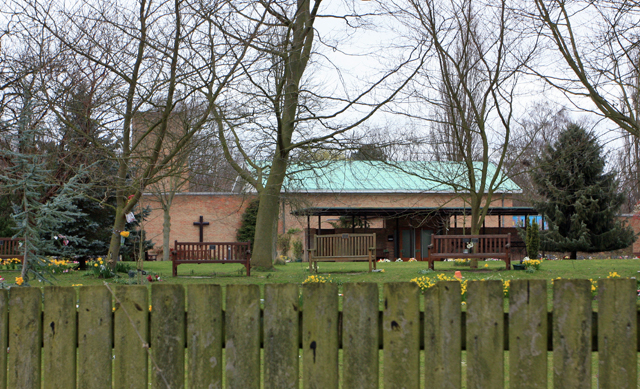The York Councils decision to ban all mourners from services at the York crematorium looked well intentioned. It was, however, implemented in a clumsy and insensitive way.

The Council has now reversed its ban and a small number of mourners will be allowed to stand outside the chapel prior to interment. They will be comforted – if they wish – by a Minister or other “celebrant”.
That is the right decision.
It had been suggested on Friday – when a government Minister said the ban should be relaxed – that a compromise would be to allow close relatives to pay their last respects from a safe distance. From what effectively would be a quarantined area.
The hope was that the short services could also be beamed to relatives homes using modern technology. It remains to be seen whether this will be done by a Council which is under increasing pressures.
Some questions remain. The closest relative of a coronaviruses victim may well have been living with them. Anyone who has been in contact with a known sufferer or carrier is in any event required to self-isolate at home for 14 days
The major change recently has been the number of people dying in the local community who were not admitted to hospital. The Council says that “A death at home will mean that family members are likely to have come into contact with the deceased and staff at the Crematorium are only alerted to this 24 hrs before the funeral when the medical certificates are sent through. At that point there is no way of knowing whether family members have symptoms, are carriers or have self-isolated for the required number of days before attending the funeral”.
The Council now says that “there can be up to 14 services a day, with up to 10 people at each service, meaning that in one day, over 150 people could potentially visit the crematorium. It is vital that the number of people visiting the crematoria is kept to a minimum, in order to minimise the chances of spreading coronavirus”.
Similar arrangements apply to burials at Fulford Cemetery.
If Funeral Directors or the technical staff at the crematorium became ill then there could be a backlog of bodies. In turn this could lead to some unsavoury choices having to be made including the possibility of mass burials.
No one knows what the incidence of coronavirus deaths will be.
The Council says it will ensure that services of remembrance at York Crematorium will be offered to all families when restrictions are lifted and a city wide multifaith remembrance ceremony will be held, supported by local faith leaders and the Council.
Arrangements will be made for ashes to be scattered in accordance with relatives wishes.
We think that local politicians should concentrate on finding solutions to issues rather than point scoring. The local MP, for example, could usefully ensure that all those in bereavement services have adequate protective clothing and are offered regular virus testing. Processes to ensure the crematorium site and transport remain sterile may also need support.
It may be that those attending funerals will also need to be tested. The absence of a quick and reliable test remains a concern. (No one in China is allowed to move around if they have a high temperature)
When the crisis is over, there will be a time for reflection. Processes and contingency plans will need to be reviewed.
It may be that the many residents who now walk and cycle enjoying the City and its environs will demand that more parks and open spaces are made available in future.
Such facilities might provide a lasting memorial for those have have lost their lives and for their relatives who also had to make a sacrifice to keep others safe.
